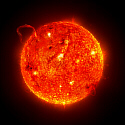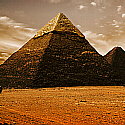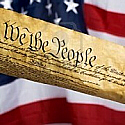Archeology
The Stones Cry Out with the Proof of God and Biblical Accuracy
The evidence backing up the Biblical record is so overwhelming, it is difficult to know where to begin. One of the world’s leading archaeologists Dr. Bryant states it best:
In every instance where the findings of archaeology pertain to the Biblical record, the archaeological evidence confirms, sometimes in detailed fashion, the historical accuracy of Scripture. In those instances where the archaeological findings seem to be at variance with the Bible, the discrepancy lies with the archaeological evidence, i.e., improper interpretation, lack of evidence, etc. — not with the Bible.”
–Dr. Bryant C. Wood, Archaeologist
There are so many digs underway, so much evidence discovered, and so many books now on the subject, that it is extremely difficult to limit our presentation. If evidence is a hang up for you… do the reasearch. Here is a mere sampling:
Sodom and Gomorrah
The ruins of Sodom and Gomorrah have been discovered southeast of the Dead Sea. Both places were destroyed at the same time by an enormous conflagration. The destruction debris was about three feet thick. Archaeologists found that buildings used to bury the dead were burned by a fire that started on the roof. What would cause every structure in the cemetery to be destroyed in this way? The answer to the mystery is found in the Bible. “Then the Lord rained down burning sulfur on Sodom and Gomorrah — from the Lord out of the heavens” (Genesis 19:24). The only conceivable explanation for this unique discovery in the annals of archaeology is that burning debris fell on the buildings from the air. But how could such a thing happen?
There is ample evidence of subterranean deposits of a petroleum-based substance called bitumen, similar to asphalt, in the region south of the Dead Sea. Such material normally contains a high percentage of sulfur. It has been postulated by geologist Frederick Clapp that pressure from an earthquake could have caused the bitumen deposits to be forced out of the earth through a fault line. As it gushed out of the earth it could have been ignited by a spark or surface fire. It would then fall to earth as a burning, fiery mass.
There is some evidence for this scenario from the Bible itself. Abraham viewed the destruction from a vantage point west of the Dead Sea. The Bible records what Abraham saw: “He looked down toward Sodom and Gomorrah, toward all the land of the plain, and he saw dense smoke rising from the land, like smoke from a furnace” (Genesis 19:28). Dense smoke suggests smoke from a petroleum-based fire. Smoke rising like smoke from a furnace indicates a forced draft, such as would be expected from subterranean deposits being forced out of the ground under pressure.
The Flood
The most documented Biblical event is the world-wide flood described in Genesis 6-9. A number of Babylonian documents have been discovered which describe the same flood. The Sumerian King List, for example, lists kings who reigned for long periods of time. Then a great flood came. Following the flood, Sumerian kings ruled for much shorter periods of time. This is the same pattern found in the Bible. Men had long life spans before the flood and shorter life spans after the flood. The 11th tablet of the Gilgamesh Epic speaks of an ark, animals taken on the ark, birds sent out during the course of the flood, the ark landing on a mountain, and a sacrifice offered after the ark landed. The Story of Adapa tells of a test for immortality involving food, similar to the story of Adam and Eve in the Garden of Eden.
Sumerian tablets record the confusion of language as we have in the Biblical account of the Tower of Babel (Genesis 11:1-9). There was a golden age when all mankind spoke the same language. Speech was then confused by the god Enki, lord of wisdom. The Babylonians had a similar account in which the gods destroyed a temple tower and “scattered them abroad and made strange their speech.”
Other examples of extra-Biblical confirmation of Biblical events:
- Campaign into Israel by Pharaoh Shishak (1 Kings 14:25-26), recorded on the walls of the Temple of Amun in Thebes, Egypt
- Revolt of Moab against Israel (2 Kings 1:1, 3:4-27), recorded on the Mesha Inscription
- Fall of Samaria (2 Kings 17:3-6, 24,18:9-11) to Sargon II, king of Assyria, as recorded on his palace walls
- Defeat of Ashdod by Sargon II (Isaiah 20:1), as recorded on his palace walls
- Campaign of the Assyrian king Sennacherib against Judah (2 Kings 18:13-16), as recorded on the Taylor Prism
- Siege of Lachish by Sennacherib (2 Kings 18:14,17), as recorded on the Lachish reliefs
- Assassination of Sennacherib by his own sons (2 Kings 19:37), as recorded in the annals of his son Esarhaddon
- Fall of Nineveh as predicted by the prophets Nahum and Zephaniah (2:13-15), recorded on the Tablet of Nabopolasar
- Fall of Jerusalem to Nebuchadnezzar, king of Babylon (2 Kings 24:10-14), as recorded in the Babylonian Chronicles.
- Captivity of Jehoiachin, king of Judah, in Babylon (2 Kings 24:15-16), as recorded on the Babylonian Ration Records
- Fall of Babylon to the Medes and Persians (Daniel 5:30-31), as recorded on the Cyrus Cylinder
- Freeing of captives in Babylon by Cyrus the Great (Ezra 1:1-46:3-4), as recorded on the Cyrus Cylinder
- The existence of Jesus Christ as recorded by Josephus, Suetonius, Thallus, Pliny the Younger, the Talmud, and Lucian.
- Forcing Jews to leave Rome during the reign of Claudius (A.D. 41-54) (Acts 18:2), as recorded by Suetonius.
- The palace at Jericho where Eglon, king of Moab, was assassinated by Ehud (Judges 3:15-30)
- The east gate of Shechem where Gaal and Zebul watched the forces of Abimelech approach the city (Judges 9:34-38)
- The Temple of Baal/El-Berith in Shechem, where funds were obtained to finance Abimelech’s kingship and where the citizens of Shechem took refuge when Abimelech attacked the city (Judges 9:4)
- The base of the Tower of Babel in Babylon where language was confused (Genesis 11:1-9)
- The pool of Gibeon where the forces of David and Ishbosheth fought during the struggle for the kingship of Israel (2 Samuel 2:12-32)
- The Pool of Heshbon, likened to the eyes of the Shulammite woman (Song of Songs 7:4)
- The royal palace at Samaria where the kings of Israel lived (1 Kings 20:43+)
- The Pool of Samaria where King Ahab’s chariot was washed after his death (1 Kings 22:29-38)
- The water tunnel beneath Jerusalem dug by King Hezekiah to provide water during the Assyrian siege (2 Kings 20:20, 2 Chronicles 32:30)
- The royal palace in Babylon where King Belshazzar held the feast and Daniel interpreted the handwriting on the wall (Daniel 5)
- The royal palace in Susa where Esther was queen of the Persian king Xerxes (Esther 1:2, 2:3, 5, 9, 16)
- The royal gate at Susa where Mordecai, Esther’s cousin, sat (Esther 2:19, 21, 3:2, 4:2, etc.)
- The Square in front of the royal gate at Susa where Mordecai met with Halthach, Xerxes’ eunuch (Esther 4:6)
- The foundation of the synagogue at Capernaum where Jesus cured a man with an unclean spirit (Mark 1:21-28) and delivered the sermon on the bread of life (John 6:25-59)
- The house of Peter at Capernaum where Jesus healed Peter’s mother-in-law and others (Matthew 8:14-16)
- Jacob’s well where Jesus spoke to the Samaritan woman (John 4)
- The Pool of Bethesda in Jerusalem, where Jesus healed a crippled man (John 5:1-14)
- The Pool of Siloam in Jerusalem, where Jesus healed a blind man (John 9:1-4)
- The tribunal at Corinth where Paul was tried (Acts 18:12-17)
- The theater at Ephesus where the riot of silversmiths occurred (Acts 19:29)
- Herod’s palace at Caesarea where Paul was kept under guard (Acts 23:33-35)





